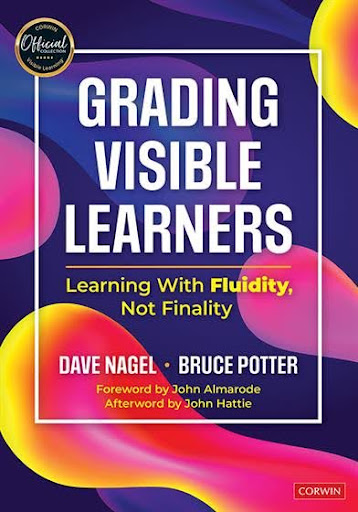GRADING for Impact
Our Approach to Grading Actions
Grading Actions Must Align With Research
Grading For Impact©

Grading for Impact© is a research-driven framework designed to aligned high yield instruction and assessment strategies with grading practices. The framework prioritizes monitoring grading and feedback to ensure they effectively boost student learning and encourage desired learner behaviors, empowering actions that enhance truthfulness and consistency.
Unfortunately, many schools neglect professional development related to grading, as they juggle numerous competing priorities. Often grading professional development produces minimal gains, falling short due to two main reasons:
- Focuses on policies and which actions don’t align rather than genuine professional learning
- Development tends to focus on superficial adjustments rather than evidence-based, adaptable practices
Professional Development for Grading for Impact©
Transform your grading and assessment practices into powerful tools for student success When we implement a grading system that prioritizes completion and compliance and penalizes students who take risks, we disrupt the learning journey—not further it. It’s time to align how we grade with what we know from research works best and help move learning forward for all students.
In our new book Grading Visible Learners we introduce the Assignment / Task Grading Matrix©. The instrument guide teachers and PLC teams when considering and student task how it will impact their grade and more importantly student learning
SI2TE Model for Supporting Equitable Grading
We believe that grading, as a form of feedback, should align with the goal of supporting all students in their growth and development as learners within an equitable environment. This requires accurately assessing student progress to meet each learner where they are in their educational journey.
Schools, teams, and individual teachers can use the SI2TE model Framework when determining grading actions and approaches to increase student academic performance as well as cultivate desired learner traits.

| Element | Brief Description |
|---|---|
| Support | Students must feel supported in taking risks in their learning leading to confidence they can overcome challenges they face in their learning journey. |
| Intervention | Teachers and collaborative teams do not wait when they notice student(s) struggling in their learning. Systems are in place both at the school and classroom levels to be decisive in instructional moves and approaches to intervene and adjust to student learning needs. |
| Incentive | Teachers develop systems of actions to incentivize students towards achievement and desired behaviors vs. a system of consequences. This is different from rewards in that adult actions focus on deepening student motivation for a fuller understanding of topics and content. |
| T-I-M-E | Teachers and collaborative teams always view time as the variable and learning as the constant. Progress and growth are always primary drivers vs. focusing on achievement goals that their merit is based primarily in how fast they were reached! |
| Evidence | Teachers and collaborative teams are relentless in their pursuit of supporting students in their next steps of learning. This requires making adjustments in assessment strategies and tools to ensure the best and most accurate evidence of student learning is the focus of student work and performance expectations. |


